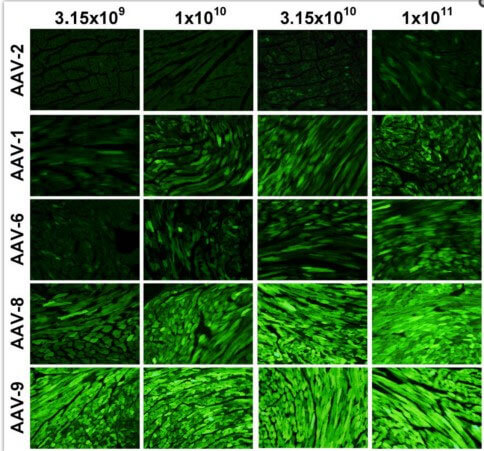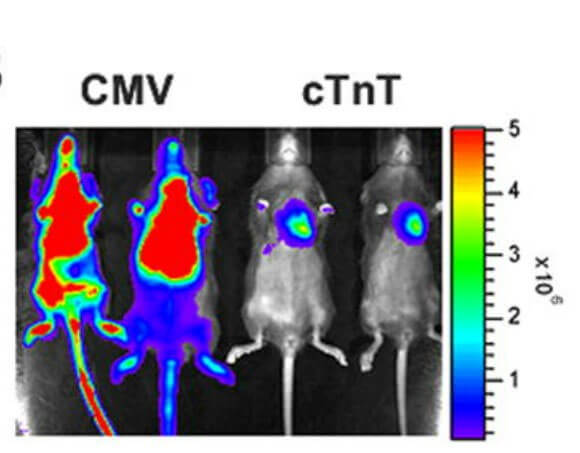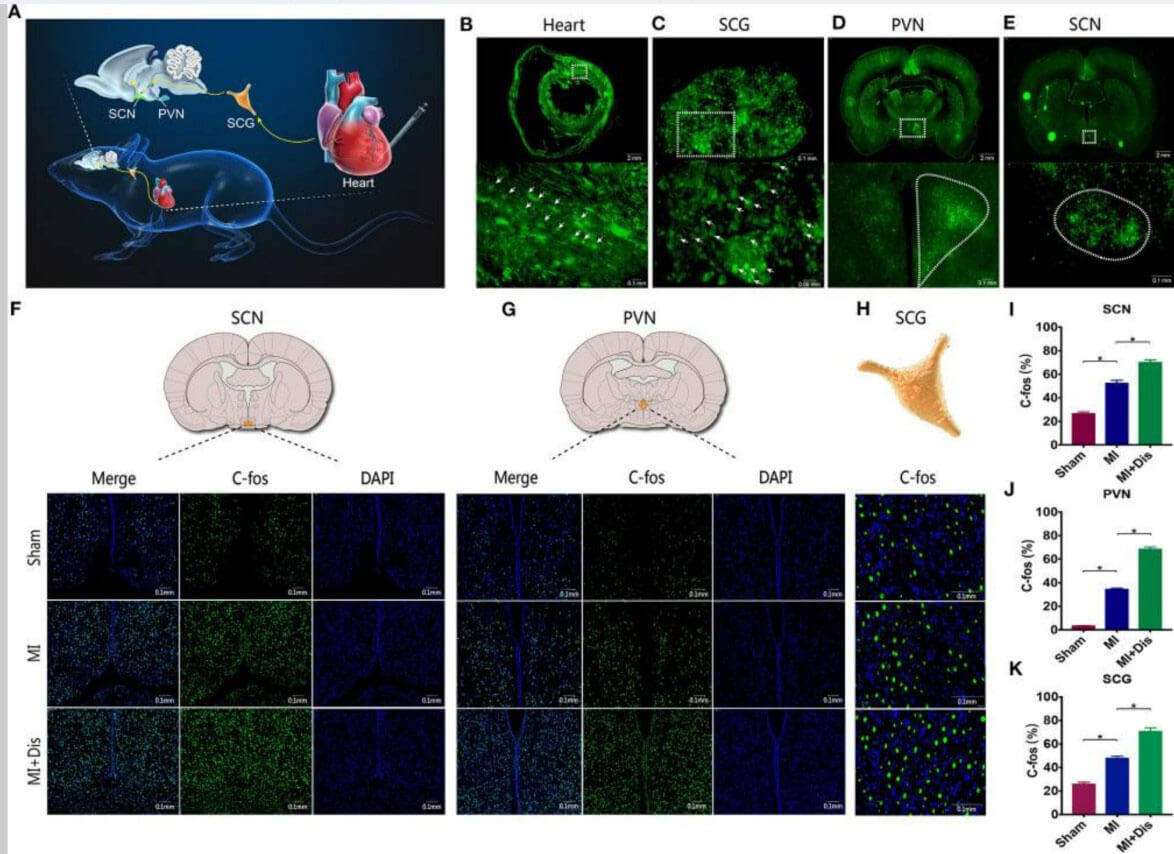- E-mail:BD@ebraincase.com
- Tel:+8618971215294
Cardiovascular disease (CVD) has become one of the leading causes of death in the world. Research shows that most heart diseases are related to genetic defects. Gene therapy has become one of the main strategies for preventing and treating CVD in preclinical and clinical research. Gene therapy introduces exogenous normal genes into target cells to correct or compensate for diseases caused by defective and abnormal genes to achieve treatment purpose. Recombination Adeno-associated Virus (rAAV) has become the most potential tool vector in gene therapy. It has low immunogenicity, wide host range, many serotypes, and can mediate long-term stable expression of foreign genes. advantage.
In addition, it is also crucial to analyze the structure and connection map of neural networks and reveal how the brain regulates heart function. The trans-synaptic tracking technology of neurotropic viruses can realize the labeling of neural circuits in the heart and central nervous system, providing strong experimental support for research on the mechanisms of cardiovascular diseases.
Here, Xiaobu brings you relevant content on rAAV and neurotropic strategies for use in the heart.
BrainCase can provide more than 20 rAAV serotypes. Different serotypes have different capsid protein structures, so they have different tropisms for different tissues. AAV serotypes AAV-1, AAV-6, AAV-8, and AAV-9 can efficiently cross the endothelial barrier. In in vivo heart studies, AAV9 and AAV8 serotypes are more effective at infecting the heart than other serotypes, with AAV9 being the predominant type in current studies.

Figure 1 The efficiency of different serotypes and different viral loads in infecting the heart, PMID: 20703310
Virus: rAAV-cTnT-EGFP
Injection method: Jugular vein injection
Animal model: 1 week old mice
Expression time: 4 weeks
Injection dose: Refer to the figure 1
Specific expression effect of serotype: AAV9>8>6>1>2
There are many types of cardiac-specific promoters, including cTNT, αMHC, Des, MLC2v, etc. Among them, cTNT and αMHC promoters are widely used.

Figure 2 Efficiency of heart infection with different promoters PMID: 20703310
Virus: rAAV/9-cTnT/CMV-luciferase
Injection method: Jugular vein injection
Animal model: 1 week old mouse
Expression time: 4 weeks
Injection dose: 1×1011 GC/mouse
Specific expression effect of serotype: cTnT> CMV

Figure 3 The efficiency of different promoters in infecting heart (B), skeletal muscle (C) and other tissues (D) PMID: 18811960
Virus: rAAV2/9-CMV/α-MHC/cTnc...-LacZ (galactosidase)
Injection method: Superficial temporal vein injection
Animal model: Neonatal mice
Expression time: 4 weeks
Injection dose: 5×1010 GC/mouse
Specific expression effect of serotype: α-MHC cardiac-specific targeting efficiency is the best, Des is mainly expressed specifically in the heart and skeletal muscle, while CMV is highly expressed throughout the body.
Neurotropic viruses are a type of virus that are highly sensitive to the nervous system. They have strict neurotropism and can spread and proliferate along specific directions of neural circuits. They are often used to trace the structure of neural networks for information output in the brain center and peripheral areas. Cardiac circuit research focuses on central regulatory circuit research, and PRV is commonly used for retrograde tracing of circuits.

Figure 4 Using PRV to trace SCN-PVN-SCG-sympathetic axis of the heart PMID: 33842566
Virus used: PRV-CAG-EGFP
Injection site: Multi-site injection in ventricular myocardium
Experimental animal: Male SD rat
Injection dose: 1×107PFU/mouse
Expression time: 5 days
Tracing results: The heart receives polysynaptic nerves from the SCN Input, there is an anatomical connection between the circadian master pacemaker SCN and the heart, namely the SCN-PVN-SCG-sympathetic axis of the heart.
The following interpretation only represents Xiaobu's personal understanding and opinion of the article. All the pictures used in this interpretation are from the original text. If you need more information, please refer to the original literature